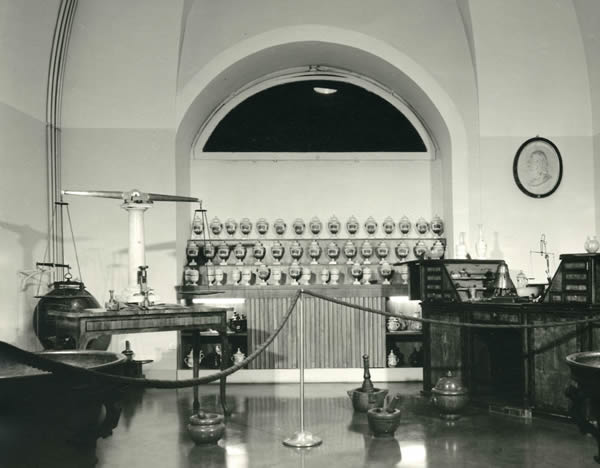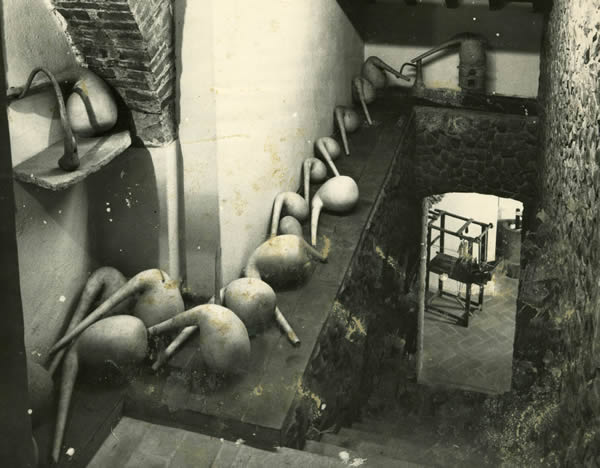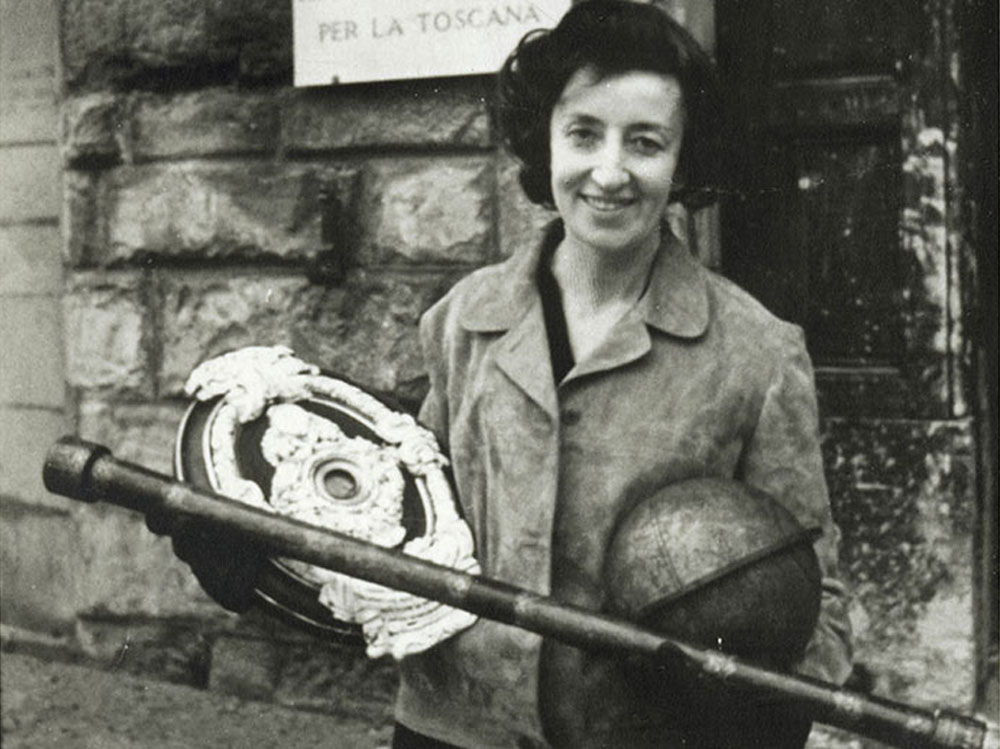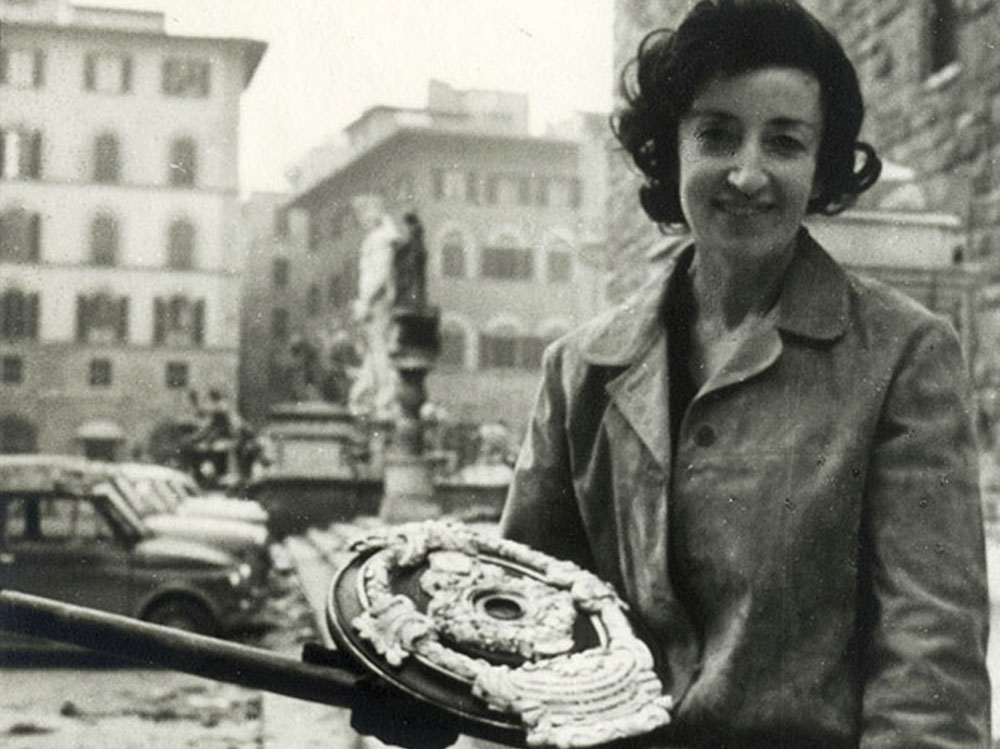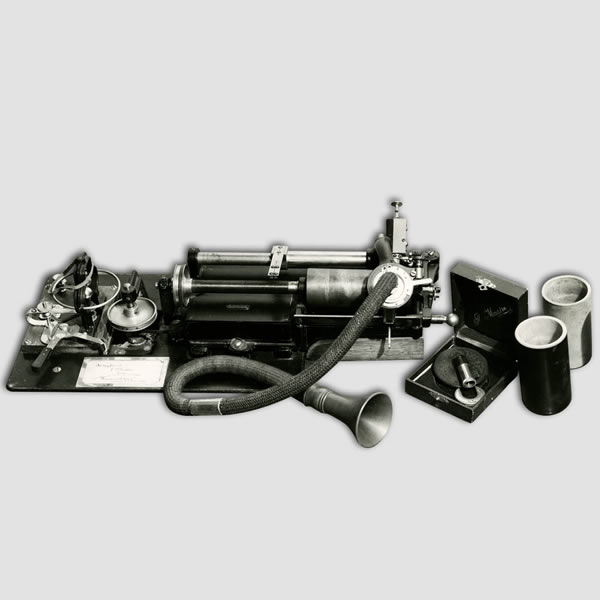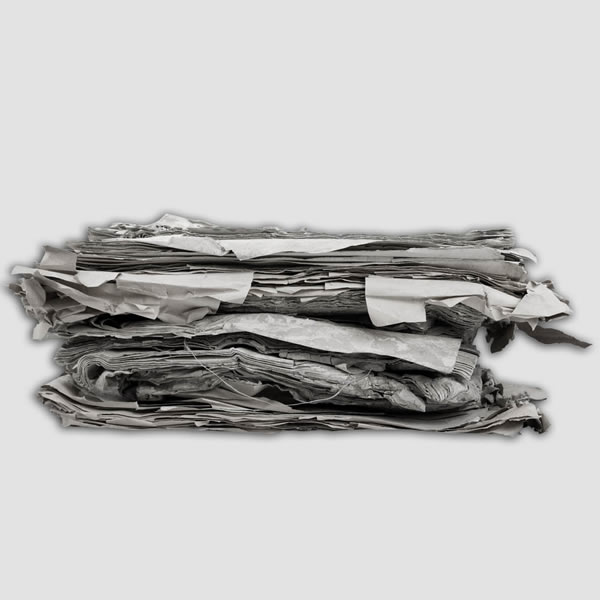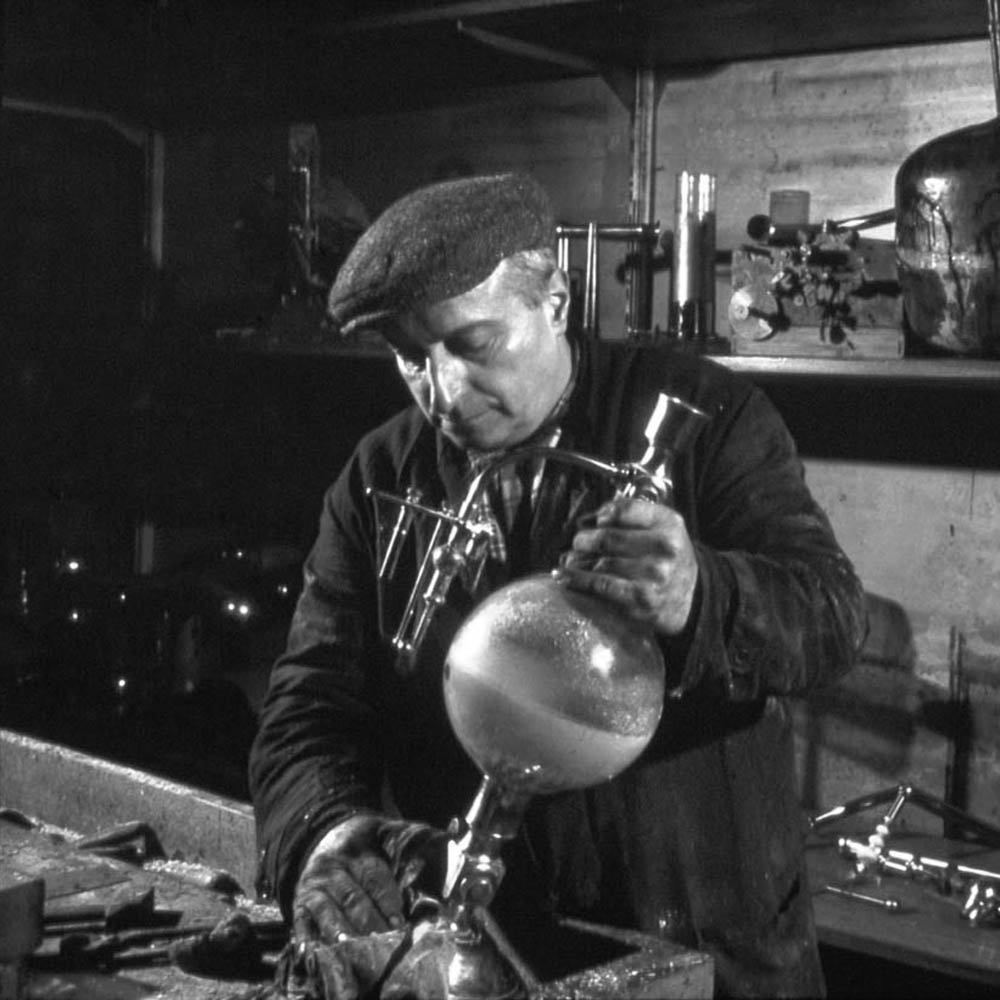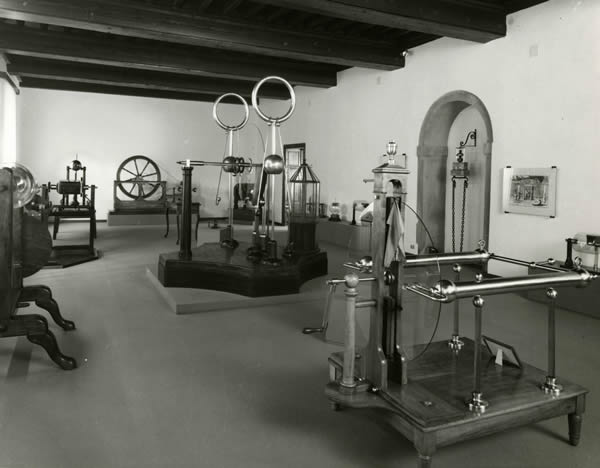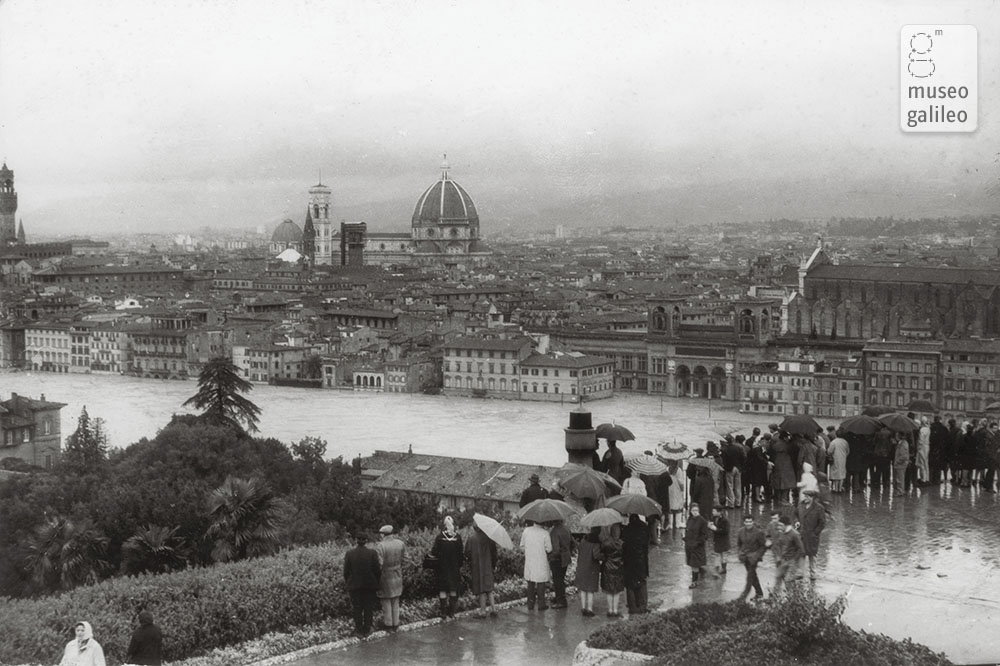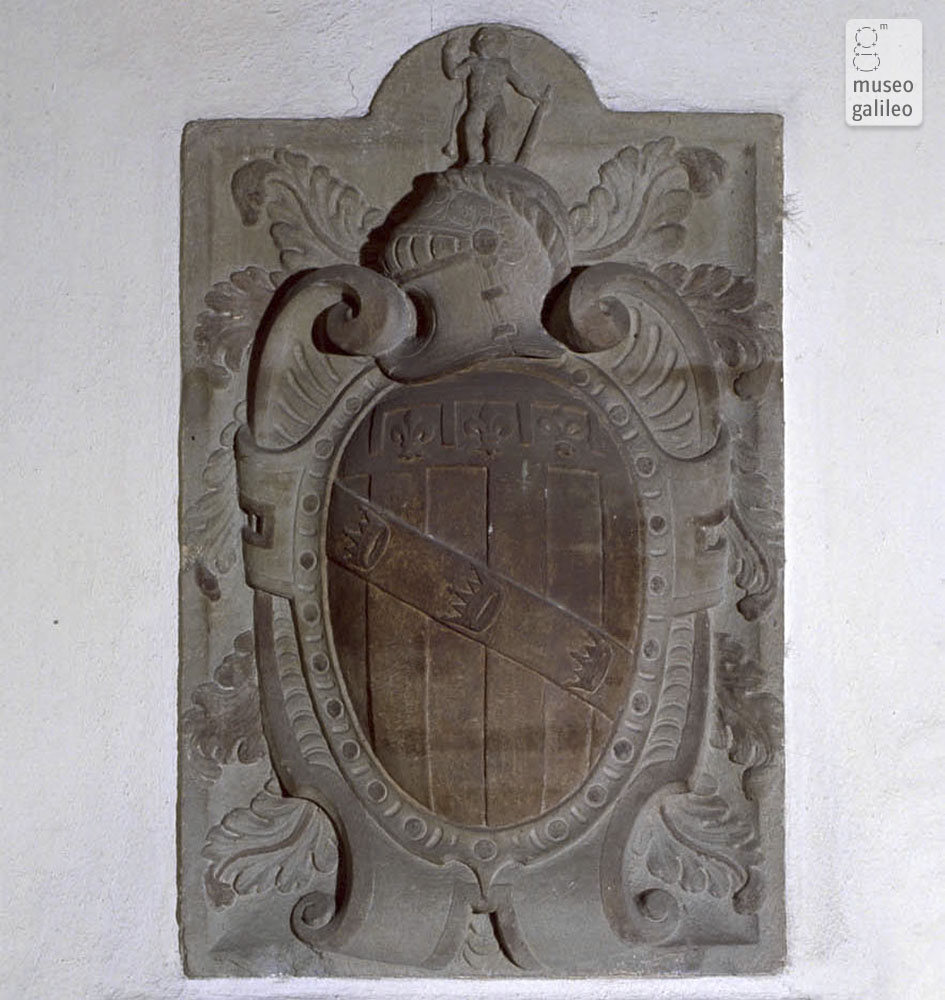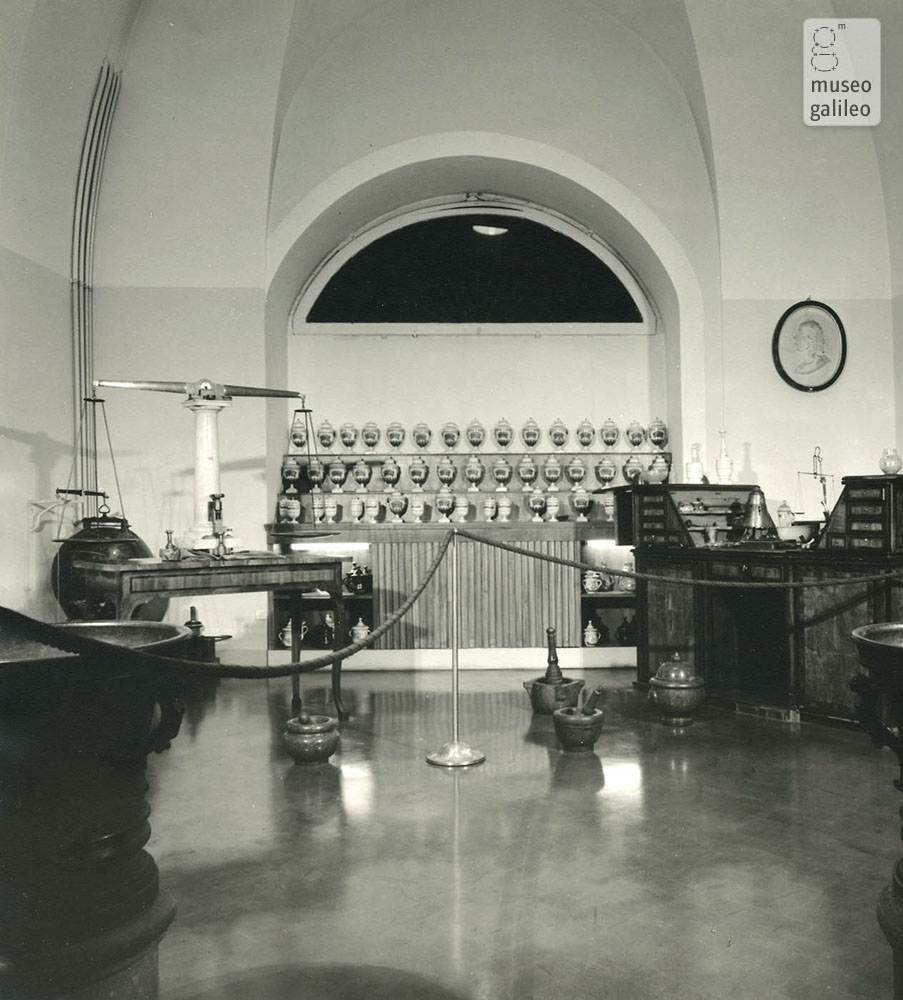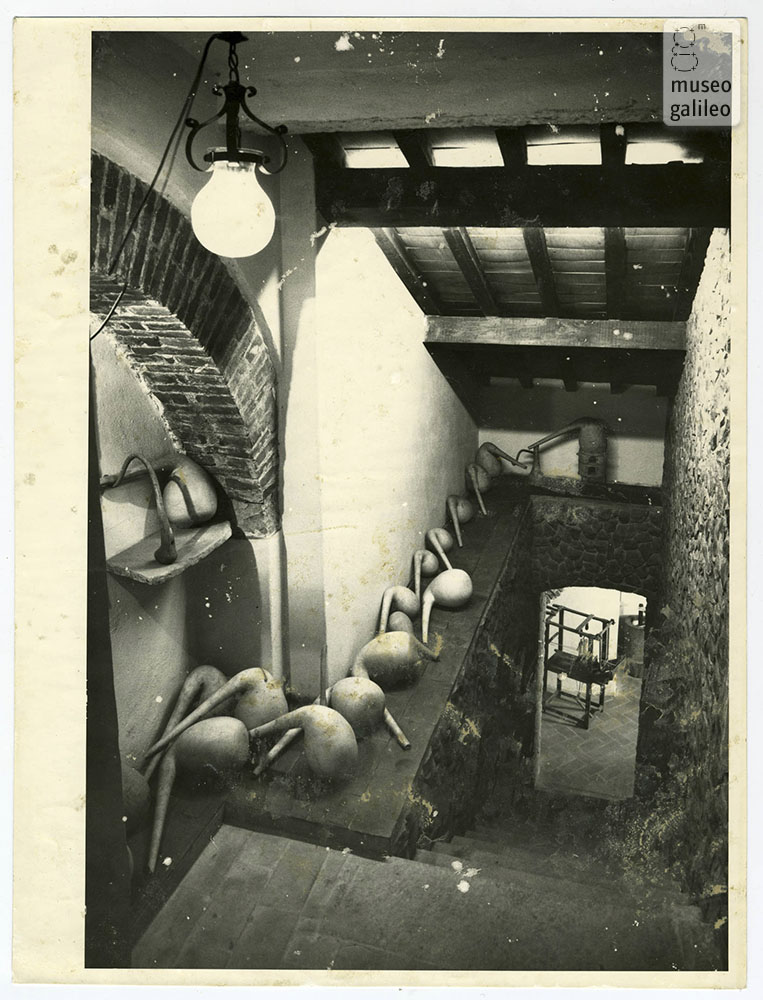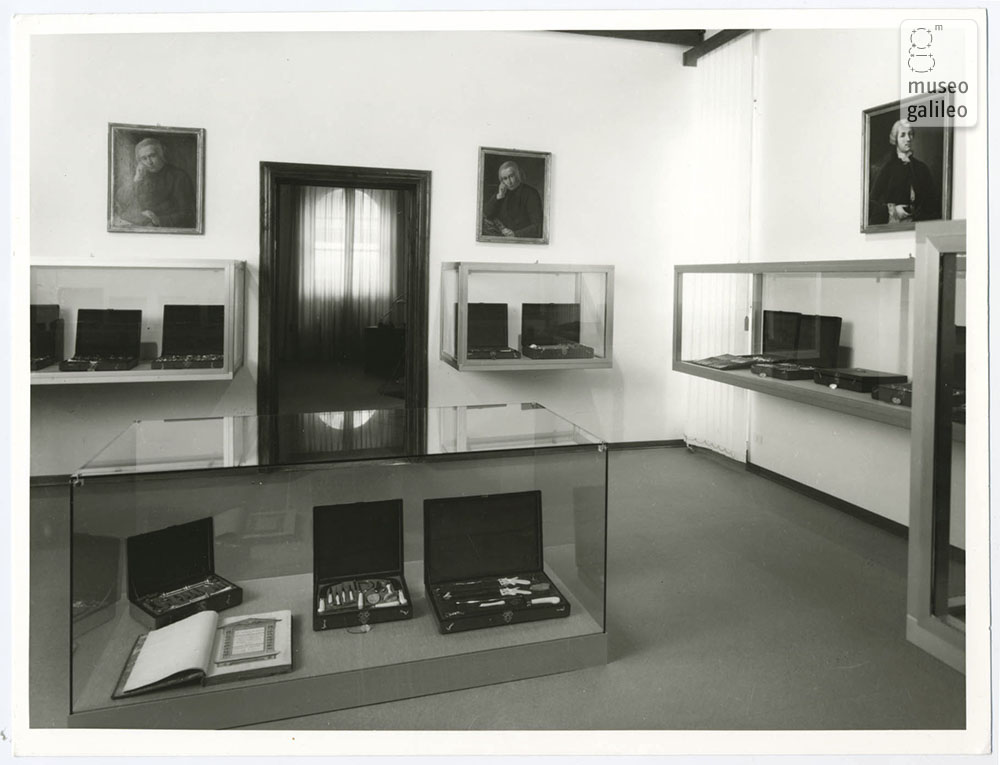The flood
After three days of unprecedented rainfall in northern and central Italy, around 6 o’clock in the morning on the 4th of November 1966, after having already invaded some quarters of the city through its sewage system, the Arno River overran its banks. Informed of the news, some residents climbed to a high point of the city – the Piazzale Michelangelo, which offers a panoramic view of the city from its terrace – and gazed with amazement at the vortex of water that was sweeping away the cars parked in the Piazza Cavalleggeri, the seat of the Biblioteca Nazionale Centrale, and the Piazza dei Giudici, the seat of the Institute and Museum of the History of Science. The water level would only begin to descend slowly towards evening. Before it returned to its bed, the Arno claimed a total of thirty-five lives and inundated the entire city centre, carrying with its waters a thick layer of mud impregnated with fuel oil from the city’s heating systems.
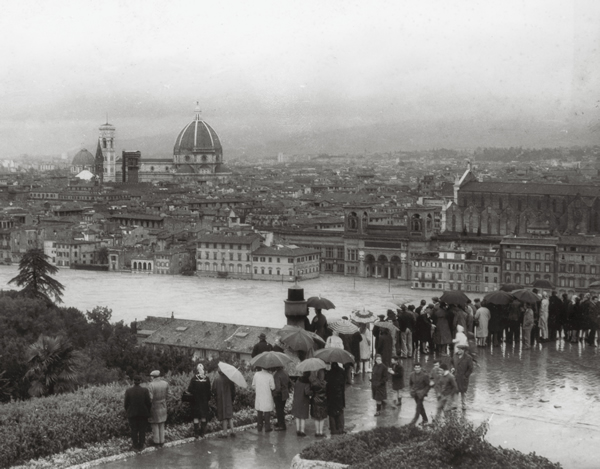
4 November 1966. Curious onlookers in the Piazzale Michelangelo
Vedi tutto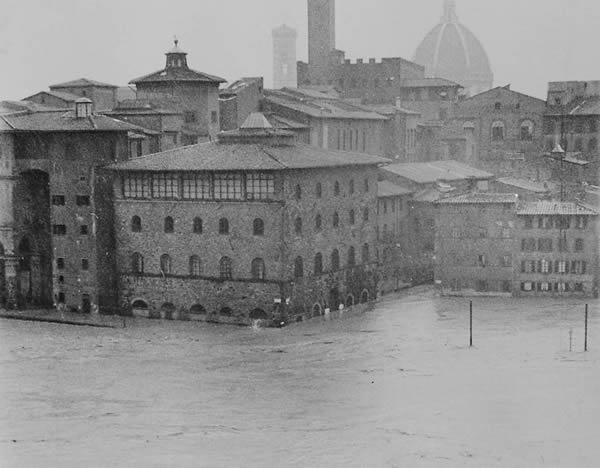
4 November 1966. Palazzo Castellani surrounded by the floodwaters
Vedi tutto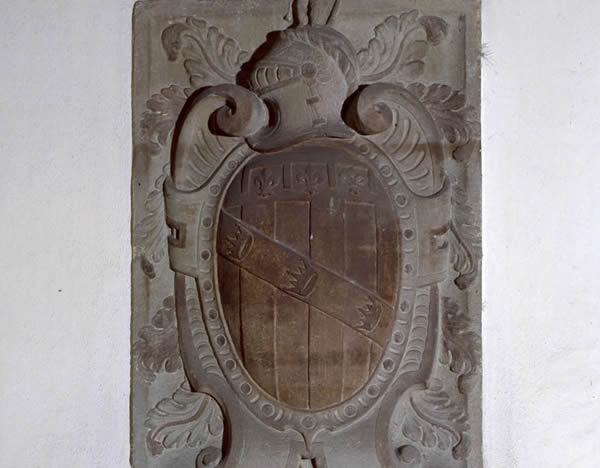
Insignia of the magistrate (1577)
Vedi tutto
